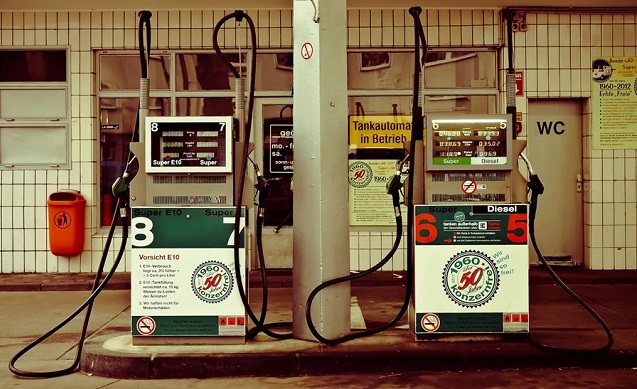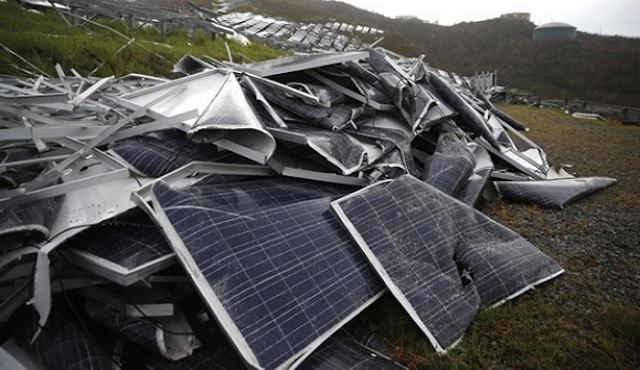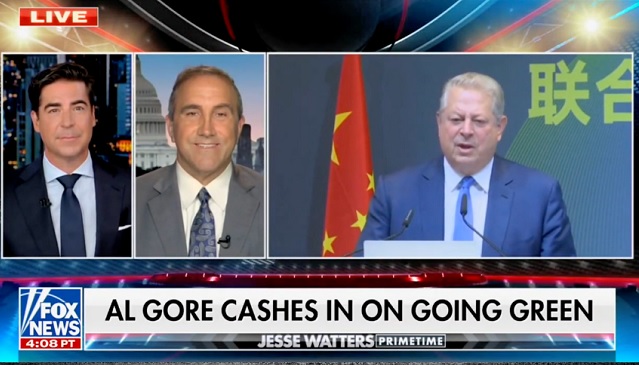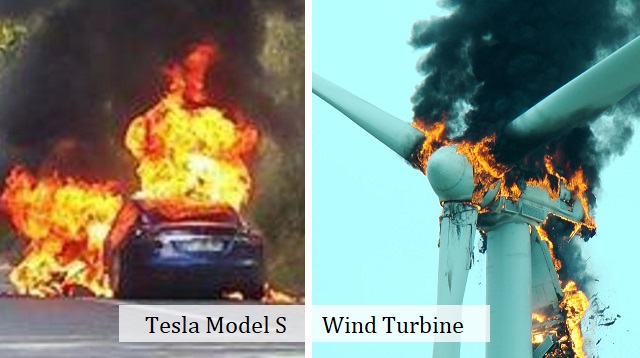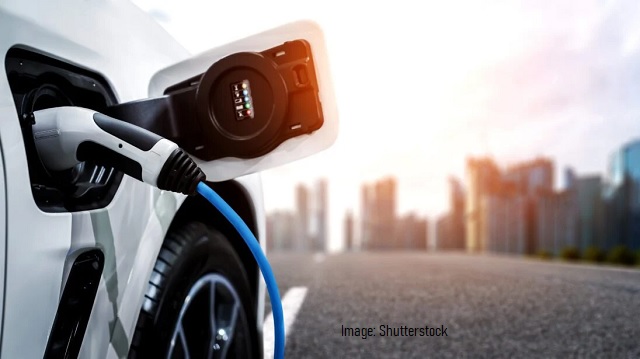West Virginia v. EPA is a blockbuster ruling of great consequence to the current reign of the administrative state over the lives of Americans. It restores core foundational principles that have been ignored or trampled for far too long—namely that lawmaking power is vested in Congress and cannot be usurped by agencies engaged in off-road driving. Its holding will rein in other lawless initiatives waiting in the wings, prominent among them, the Securities and Exchange Commission’s recent implausible assertion that Congress’s grant of power in 1933 and 1934 to regulate exchanges to ensure honest markets gives it power today to impose Environmental, Social and Governance (ESG) regulations on publicly-traded companies.
How the Case Came About
This dispute about the power of the Environmental Protection Agency (EPA) was close to a decade in the making, reaching back to the Obama Administration’s 2015 adoption of a Clean Power Plan (CPP). Simply put, the question before the court was whether the EPA could deploy an obscure provision of the 1970 Clean Air Act to reconfigure what components should compose the nation’s entire electric grid. Prior to that time, the “best systems” section of the 1970 Act had only allowed EPA to set source-specific emission levels for existing coal, natural gas, and renewable energy plants. Under the Obama plan, what once had been EPA’s power to require scrubbers had now become the agency’s unilateral power to convert entire power plants from one type of energy to another—or eliminate them altogether.
The rule never went into effect because the Supreme Court issued a stay of this extraordinary power grab in early 2016. The Obama CPP was then repealed by the Trump administration in 2019 and replaced with the Affordable Clean Energy Rule (ACE) which more modestly sought to make coal-burning energy plants cleaner and more efficient. But on January 19, 2021, ACE, in turn, was struck down by the D.C. Circuit Court of Appeals on the eve of a new administration, leaving EPA wide open to put into effect a reading of “best systems” that empowered the agency to orchestrate the composition of the energy sector.
The decision—and the dissent—both open with a scuffle over standing and mootness common in environmental litigation that veers from one President’s vision to the next. The government argued that as there was no plan in place, the Court should not rule at all. Such strategic “mooting” explains how such disputes can and do drag out for years and through changes of administration. Unfortunately, this bob-and-weave embroils the courts in a protracted dance with the Executive that shuts Congress out altogether.
Accordingly, the Court applied its mooting precedents (which provide that a policy that may recur is justiciable) to halt this decade-long waltz and reach the core question of “who decides?” national energy policy. While this justiciability question could have gone either way, the Court made the right judgment call to end this dispute because neither EPA nor the Courts possess the power to determine national energy policy. Protracted litigation based on the fiction that Congress has somehow delegated this power to the EPA only lets Congress off the hook, serving the interests of no one but the activists and the lawyers. Indeed, one of the best consequences of this case is that Congress will have to decide our energy policy to more lasting effect than “plans” imposed and replaced by politicized agency bureaucrats. And that decision will be with the consent of the governed as it must be, under the Constitution.
What is a “System”?
In West Virginia, EPA explicitly proffered and vigorously defended its 2016 reading that “best systems” permits the agency to engage in macro regulation that includes determining what site- and source-specific plants will make up the energy sector. Both the majority opinion and the concurrence refused to buy this reading of the statute. In the majority’s view, EPA can only set standards within the bounds of a given energy source’s existing “system.” To the dissent, “system” means, well, the whole power industry, with which EPA can tinker like some distant autocrat orchestrating shutdowns of coal plants, and pop-ups of wind and solar farms. The dissent even argues that the EPA could “simply require[e] coal plants to become natural gas plants under this power to determine ‘best systems.’” The majority demurs, eyebrows raised, noting that the agency has never ordered anything remotely like that, and “we doubt it could.” The 1970 Section 111(d) only empowers EPA to guide States in “establishing standards of performance” for “existing source[s],” not to direct existing sources to effectively cease to exist.”
The majority recognized that EPA’s seizure of life and death control over the power plants of America is “eyebrow raising,” invoking a well-established line of precedent which rejects such self-conferred expansions of agency power. For example, in 2000, the FDA could not self-assert power to regulate tobacco. More recently, the Court ruled that the Centers for Disease Control had been given no power by Congress to regulate state housing policy and invalidated CDC’s shocking nationwide shutdown of state court evictions. The Court must enforce these guardrails, or our polity will be at the mercy of bureaucrats gone wild, as our national experience of the plague years vividly demonstrated, at incalculable and continuing cost to Americans.
The majority also explicitly invoked the Major Questions Doctrine, which counsels that Congress must decide such major law and policy questions, not agencies straying far out of their regulatory lane. In doing so, it quoted two respected scholars of the administrative state’s witty formulation: agencies only have the powers expressly given to them by Congress, and their organic statutes are not an “open book to which the agency [may] add pages and change the plot line.”
The Court’s decision to read “system” in this narrow, sensible manner rather than endorse EPA’s grandiose vision (that, by the way, no one seriously believes Congress conferred upon it in 1970), has resulted in a firestorm. Heightened rhetoric swirls around West Virginia: President Biden described the decision as “devastating,” accusing the Court of “sid[ing] with special interests that have waged a long-term campaign to strip away our right to breathe clean air.” “Supreme Court Declares War on Governing” gasped Vanity Fair. “The U.S. Supreme Court has declared war on the Earth’s Future,” keened The Guardian. Mainstream media and the climate change clerisy have accused the Supreme Court of a meanspirited, anti-environment, military attack on the planet and administrative governance. The Twittersphere is abuzz with doomsday.
Deconstructing the Dissent
The stridency that now pervades the public discourse disturbingly starts with the first words of the dissent, which incant the almost religious tenets of the Climate Change Creed, prefaced with its solemn assertion that those tenets “are no longer subject to serious doubt.”
And what are these tenets? Unequivocal, not-to-be-questioned human influence in global warming. This malign human influence brings death, coastal inundation, and erosion, severer and severer hurricanes, floods, droughts, ecosystem destruction, and disruptions in the food supply. Children born in 2022 will witness the Eastern seaboard slide into the Atlantic. This weather may “force mass migration, political crises, civil unrest, and even state failure.” By the year 3000, 4.6 million excess yearly deaths could be caused by climate change.
The Supreme Court declined to accede to “experts” flexing unilateral power to control the energy sector.
This parade of horribles serves to distract the reader from noticing that the very next sentence of Justice Kagan’s dissent is untrue. She asserts that in 1970, “Congress charged EPA with addressing those potentially catastrophic harms” by enacting Section 111 of the Clean Air Act. Nonsense. The very text of the statutory provision provides that EPA must apply best systems to “existing sources.”
Moreover, in the 1970s, the scientific consensus was that the climate was facing another ice age, with Newsweek reporting “a significant chilling of the world’s climate, with evidence accumulating ‘so massively that meteorologists are hard-pressed to keep up with it.’ … shorter growing seasons and poor crop yields, famine, and shipping lanes blocked by ice, perhaps to begin as soon as the mid-1980s. Meteorologists … were ‘almost unanimous’ in the opinion that our planet was getting colder.” Some alarmist scientists were offering up potential solutions such as melting the arctic ice cap by covering it with black soot—by human agency! So much for relying upon experts! Congress simply did not have the dissent’s apocalyptic vision in mind—at least not as to warming—in 1970. Clearing smog was Congress’ sensible and admirable goal.
Kagan’s dissent ends with a glowering scold: “The stakes here are high,” followed by: “The Court appoints itself—instead of Congress or the expert agency—the decisionmaker on climate policy. I cannot think of many things more frightening.” The dissent is right that the stakes are high, but dead wrong in its unfair accusation. The majority and concurrence have insisted that Congress must be the decisionmaker on these major questions, and that neither the Court nor an “expert” agency—nor a President with a pen and phone—can be the decider.
The majority’s quiet, reasoned insistence upon observing the foundational principles of representative government and healthy skepticism of the EPA’s lunge for power—at a time when those foundational concepts are being flouted by agencies prepared to expand far beyond their remit, could not be more important and timely.
Most important constitutional cases boil down to “Who decides.” We all know that Congress is supposed to make the law. Agencies must never make such momentous decisions. The lawmaking power is vested in Congress, and it uniquely has the tools to gather facts, engage in debate, weigh the myriad interests at stake, and then legislate—or not. And it is always accountable, along with the President in the exercise of presentment power—for the outcome. In sum, this case is about one thing, and one thing only: Consent of the governed.
It’s that simple. EPA’s own calculations of the costs of the CPP acknowledged billions in compliance costs, higher energy prices, the retirement of dozens of coal-fired plants, and the elimination of tens of thousands of jobs across economic sectors. If you are a resident of West Virginia who finds your coal-powered plant shut down, jobs lost, utility costs, and gas and food prices skyrocketing by double digits, who can you blame? If the dissent had its way, these economic displacements would be imposed by distant, unaccountable bureaucrats who, by the way, may be just as fallible as any politician as to the wisdom of a plan entailing such massive scientific, social, environmental, and economic impacts. This is why law-making should be hard and made through a combination of powers of the two politically accountable branches.
Sri Lanka
Speaking of the fallibility of experts, international news would soon abound in irony. Just two weeks after the dissent’s litany of catastrophe, news of, wait for it, “significant disruptions in the food supply … mass migration … political crises, civil unrest and … even state failure” erupted from Sri Lanka. The cause, as reported by Michael Shellenberger:
The underlying reason for the fall of Sri Lanka is that its leaders … fell under the spell of Western green elites peddling organic agriculture and “ESG,” which refers to investments made following supposedly higher Environmental, Social, and Governance criteria. Sri Lanka has a near-perfect ESG score of 98—higher than Sweden (96) and the United States (51). What does having such a high ESG score mean? In short, it meant that Sri Lanka’s two million farmers were forced to stop using fertilizers and pesticides, laying waste to its critical agricultural sector. …
The numbers are shocking.
One-third of Sri Lanka’s farmlands were dormant in 2021 due to the fertilizer ban. Over 90 percent of Sri Lanka’s farmers had used chemical fertilizers before they were banned. After they were banned, an astonishing 85 percent experienced crop losses. Rice production fell 20 percent and prices skyrocketed 50 percent in just six months. Sri Lanka had to import $450 million worth of rice despite having been self-sufficient just months earlier. The price of carrots and tomatoes rose fivefold. All this had a dramatic impact on the more than 15 million people of the country’s 22 million people who are directly or indirectly dependent on farming.
Americans should rejoice that its Supreme Court declined to accede to “experts” flexing unilateral power to control the energy sector—to be followed in short order by ESG dominion by a Wall Street regulator. Understanding that this flawed ideology directly led to the tragic humanitarian crisis in Sri Lanka is essential to the exercise of enlightened franchise by Americans refusing to submit to the wokeism that has already imposed enormous costs upon Americans. The SEC’s ESG rules suffer from the same flaws as the CPP—a lack of statutory authority, arrogation of agency power over a major—and debated—question, and enormous economic disruption that would affect nearly every aspect of the country’s economic and political future. The principles restored by the Court in West Virginia foreclose SEC’s costly ESG regulation.
The Spirit of Liberty
In 1944, as the world was engulfed in the most widespread and destructive war in history, brought on by the horrors of unchecked autocratic rule, Judge Learned Hand tried to define what comprised the spirit of liberty.
The spirit of liberty is the spirit that is not too sure that it is right; the spirit of liberty is the spirit that seeks to understand the mind of other men and women; the spirit of liberty is the spirit which weighs their interests alongside its own without bias.
In other words, “Experts, bureaucrats, administrators, consider that you might be wrong!” David Mamet notes that when the experts get it wrong, it is the rest of us who pay. As he puts it, [t]he virus here is government—or at least the incompetents who advise our rulers and cannot admit the legitimacy of dissension,” an all-too-apt description of the tone and reliance upon the expertise of the West Virginia dissent. The Covid years have been a crash course in the incalculable and enduring damage caused by turning government over to experts. The humanitarian disaster in Sri Lanka is a sobering here-and-now reminder that autocratic imposition of expertise by unchecked bureaucrats comes not only at great cost to a society’s well-being and economy but also to its liberty.
*****
This article was published by Law & Liberty and is reproduced with permission.
TAKE ACTION
Are you concerned about election integrity? What informed United States citizen isn’t? Did the 2020 national election raise many questions about election integrity? Are you concerned about the current cycle of primaries and then the general election in November? No doubt the answer for The Prickly Pear readers is YES.
Click below for a message from Tony Sanchez, the RNC Arizona Election Integrity Director to sign up for the opportunity to become an official Poll Observer for the 8/2 AZ Primary and the 11/8 General Election in your county of residence. We need many, many good citizens to do this – get involved now and help make the difference for clean and honest elections.



